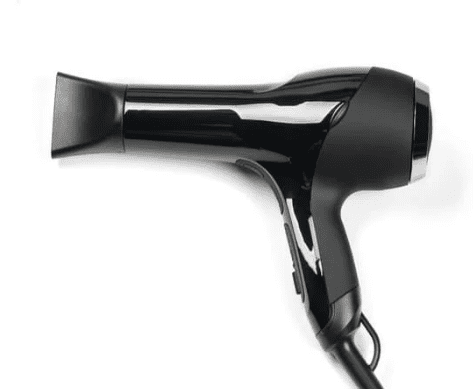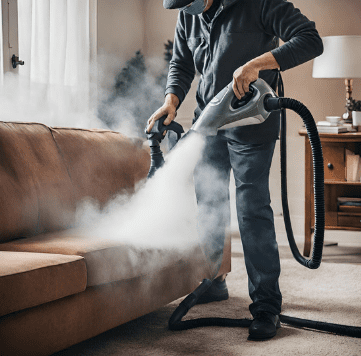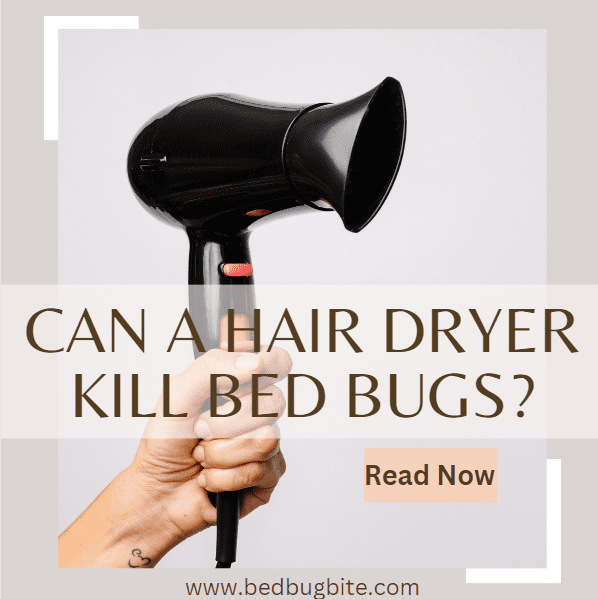Introduction: Understanding Bed Bugs
Welcome to our comprehensive guide on tackling one of the most stubborn pests found in households across the globe: bed bugs. These tiny, elusive creatures have made their way into our homes. Finding refuge in the crevices of mattresses, furniture, and even behind wallpaper, making them a significant concern for homeowners everywhere. Understanding the nature of bed bugs is the first step towards effective eradication. These insects lead a cryptic lifestyle, emerging primarily at night to feed on human blood, leading to itchy, uncomfortable bites. Their lifecycle, from egg to adult, coupled with their ability to survive months without feeding, makes them formidable opponents in the pest world. …Click now to keep reading about Bed Bugs!
The quest for efficient bed bug elimination methods has led to a myriad of solutions. Ranging from chemical treatments to DIY remedies. However, one method that has sparked interest is the use of heat treatment. Given bed bugs’ vulnerability to high temperatures, this method offers a non-toxic, environmentally friendly alternative to chemical extermination. It raises the question: can household tools like hair dryers be effective in this heat-driven battle against bed bugs?
Effective Heat Treatment Strategies
In this article, we delve into the science behind heat treatment, exploring how temperatures above 118°F (48°C) can disrupt the life cycle of bed bugs, ultimately leading to their demise. This understanding is crucial, as it underpins the rationale behind using heat as a weapon against these pests. We’ll examine whether a common household item, the hair dryer, can generate the necessary heat to eradicate bed bugs and provide a step-by-step guide on using it effectively. Additionally, we’ll explore alternative heat treatment methods and preventative measures to keep your home bed bug-free.
Armed with the latest research and expert insights, this guide aims to empower you with the knowledge needed to tackle bed bug infestations head-on. As the leading source of bed bug information, we’re here to guide you through every step of the process. Ensuring your home returns to being the comfortable, pest-free sanctuary it should be. Stay tuned as we explore the effectiveness of hair dryers in the fight against bed bugs. Offering practical advice to help you reclaim your space from these unwelcome invaders.
The Science Behind Heat Treatment
Diving deeper into our exploration of combatting bed bugs with heat, it’s crucial to understand the precise mechanism that makes heat treatment a viable solution. At the heart of this strategy lies the scientific principle that bed bugs, like all creatures, have a thermal death point. This is the temperature at which all stages of bed bug life—from the nearly invisible eggs to the full-grown adults—are effectively killed. Research indicates that exposing bed bugs to temperatures of 118°F (48°C) for at least 20 minutes can be lethal. However, achieving and maintaining this temperature uniformly is key to the success of this method.
The Critical Temperature for Killing Bed Bugs and Eggs
Understanding the thermal death point is not just academic; it’s a practical blueprint for any heat treatment strategy. For bed bugs, the magic number is around 118°F. This threshold disrupts their cellular function, effectively killing them. But it’s not just the adults that are susceptible. Bed bug eggs, often the most challenging to eradicate due to their resistance to many forms of pest control, also succumb to these temperatures. This scientific insight underpins the rationale for using heat as a comprehensive treatment approach, targeting bed bugs at all stages of their lifecycle.
Explanation of How Heat Affects Bed Bugs
Heat treatment works by elevating temperatures to a point where bed bugs cannot survive. This method is effective because it can penetrate into cracks and crevices, reaching bed bugs in their most hidden lairs. The process involves raising room temperatures to the critical thermal death point and holding it there long enough to ensure a complete kill. It’s a method praised for its non-toxic approach, offering a safe alternative to chemical treatments, which bed bugs can sometimes resist.
The application of this knowledge forms the foundation of our exploration into whether a common household item like a hair dryer can achieve these critical temperatures, offering a DIY solution to the pervasive problem of bed bugs. Armed with an understanding of the thermal death point and how heat affects these pests, we can assess the practicality and effectiveness of using heat treatments, including hair dryers, in the battle against bed bug infestations. This scientific backdrop is essential as it informs the subsequent discussion on the feasibility of employing a hair dryer in eradicating these unwelcome house guests.
Can a Hair Dryer Kill Bed Bugs?

The intriguing possibility of using a hair dryer as a weapon against bed bugs brings us to a pivotal point in our discussion. This everyday household item, typically relegated to styling hair, may hold the potential to combat one of the most persistent pests known to humans. Given that bed bugs and their eggs succumb to high temperatures, a hair dryer’s ability to emit hot air might seem like a natural fit for this purpose. However, the question remains. Can a hair dryer generate enough heat to effectively kill bed bugs, and is it a practical method for addressing an infestation?
How a Hair Dryer Works in Applying Heat
A hair dryer operates by blowing air over a heated coil, thereby producing a stream of hot air. The temperatures can vary significantly, with some hair dryers capable of producing air temperatures in excess of 140°F (60°C). This is well above the thermal death point for bed bugs, theoretically making it a viable tool for heat treatment. However, the effectiveness of a hair dryer in combating bed bugs hinges on its ability to maintain consistent high temperatures and direct heat to the pests and their hidden nests.
The Pros and Cons of Using a Hair Dryer Against Bed Bugs
While the premise of using a hair dryer to kill bed bugs is grounded in the principle of heat treatment, several practical considerations must be taken into account.
Pros:
- Accessibility: Virtually everyone has a hair dryer, making it a readily available tool for immediate use.
- Direct Heat Application: It allows for targeted application of heat, potentially reaching into crevices and cracks where bed bugs hide.
Cons:
- Inconsistent Heat Distribution: Achieving and maintaining the uniform high temperatures needed to kill bed bugs throughout an infested area can be challenging.
- Risk of Scattering: The air flow from a hair dryer might cause bed bugs to scatter, potentially spreading the infestation.
- Safety Concerns: Extended use of a hair dryer can pose overheating risks or even cause burns if improperly handled.
Considering these factors, the use of a hair dryer in fighting bed bugs presents a mix of potential benefits and significant limitations. It’s essential to weigh these carefully and understand that while a hair dryer might kill some bed bugs on contact. It is unlikely to be a comprehensive solution for an infestation. The following sections will delve into a step-by-step guide on employing a hair dryer in bed bug eradication efforts. Along with safety precautions and more effective alternative methods. This analysis aims to provide a balanced view, empowering readers to make informed decisions about managing bed bug challenges.
Effective Use of a Hair Dryer for Bed Bug Control
Embarking on the quest to use a hair dryer as a tool against bed bugs requires not only an understanding of its potential but also a strategic approach to maximize its effectiveness while minimizing risks. This section aims to guide you through the process of using a hair dryer to combat bed bug infestations. Offering practical advice and essential safety tips to ensure your efforts are both effective and safe.
Step-by-Step Guide on Using a Hair Dryer for Bed Bug Treatment
To effectively utilize a hair dryer in your fight against bed bugs, follow these steps:
- Preparation: Begin by removing clutter from the infested area to minimize hiding spots for bed bugs. Seal any cracks and crevices to prevent them from escaping the heat treatment.
- Inspection: Identify the areas where bed bugs are most likely to hide. Focus on mattresses, bed frames, baseboards, and furniture joints.
- Application: Set the hair dryer to its highest heat setting. Slowly direct the hot air over the identified infested areas, maintaining a distance of about 3-4 inches. Move the dryer steadily to avoid overheating any single spot.
- Coverage: Ensure thorough coverage by treating all potential bed bug hideouts. Pay particular attention to seams, crevices, and folds where bed bugs and their eggs may reside.
- Repetition: Repeat the process over several days. Multiple treatments are often necessary to address any bed bugs that were missed or have hatched since the initial treatment.
Safety Precautions and Tips for Effective Use
While employing a hair dryer against bed bugs, keep these safety precautions and tips in mind:
- Avoid Overheating: Constantly monitor the temperature of the surfaces being treated to prevent damage to your belongings or the risk of fire.
- Electrical Safety: Ensure the hair dryer and its cord are in good condition to prevent electrical hazards.
- Personal Safety: Wear protective gloves to avoid burns from the hot air and surfaces.
- Awareness: Stay mindful of the hair dryer’s limitations. It may not reach deep enough into mattresses or thick furniture to kill all bed bugs and eggs.
Conclusion on Using a Hair Dryer for Bed Bug Control
While a hair dryer can kill bed bugs exposed to high temperatures, it’s crucial to recognize its limitations as a stand-alone treatment method. The effectiveness of a hair dryer in eradicating an entire infestation is limited due to the difficulty in ensuring consistent heat penetration and the risk of dispersing bed bugs. Therefore, it should be considered a supplementary tactic, best used in conjunction with more comprehensive bed bug control strategies.
In the following sections, we will explore alternative methods and preventative measures to provide a holistic approach to bed bug management. This guide aims to arm you with the knowledge and tools necessary to reclaim your home from bed bugs. Offering insight into the most effective and safe practices for pest control.
Alternatives to Using a Hair Dryer
Recognizing the limitations of using a hair dryer for comprehensive bed bug eradication underscores the necessity for exploring alternative, more effective treatment methods. While the convenience of a household item is appealing. Bed bug infestations often require a multifaceted approach to ensure complete removal. This section delves into professional and do-it-yourself (DIY) alternatives that offer broader coverage and a higher success rate in eliminating bed bugs from your environment.
Professional Heat Treatment Options
For those facing severe infestations, professional heat treatment stands out as a highly effective solution. This method involves heating the entire affected area to temperatures lethal to bed bugs. Ensuring that even the most hidden pests are eradicated.
- Comprehensive Coverage: Professionals use specialized equipment to raise the temperature of your home to between 135°F (57°C) and 145°F (63°C), effectively penetrating all bed bug hiding spots.
- Efficiency: This method can eliminate bed bugs in all life stages in just one treatment, making it a quick solution to bed bug problems.
- Safety and Convenience: Professional exterminators are trained to perform heat treatments safely, reducing the risk of damage to your property.
DIY Methods: Steamers, Washer and Dryer, etc.

For those who prefer handling bed bug infestations themselves, there are several effective DIY methods that can complement or, in some cases, substitute the use of a hair dryer.
- Steam Cleaning: Steamers can produce temperatures well above the thermal death point for bed bugs. Offering a way to treat mattresses, furniture, and other items without chemicals.
- Washing and Drying: Bedding, clothing, and other washable items should be laundered in hot water and then placed in a dryer on the highest heat setting for at least 30 minutes to kill bed bugs.
- Encasements: Using mattress and box spring encasements can trap bed bugs. Effectively cutting off their food supply and leading to their eventual death.
Preventing Bed Bug Infestations in the Future
In addition to addressing current infestations, it’s crucial to implement strategies to prevent future bed bug problems.
- Regular Inspections: Regularly check for signs of bed bugs, especially after traveling or purchasing second-hand furniture.
- Minimize Clutter: Reducing clutter in your home can limit bed bug hiding spots and make it easier to spot an infestation early.
- Awareness and Education: Stay informed about bed bug prevention techniques and educate your family and friends on how to avoid bringing bed bugs into the home.
While a hair dryer might offer a quick fix for visible bed bugs, achieving long-term, bed bug-free living spaces often requires a more strategic approach. By considering professional services or adopting effective DIY methods, you can enhance your bed bug control efforts. This guide aims to provide you with a comprehensive understanding of the options available to you, empowering you to make informed decisions in your fight against bed bugs.
Preventing Bed Bug Infestations in the Future
As we wrap up our exploration of methods to combat bed bugs, it becomes clear that prevention is just as crucial as eradication. Keeping these persistent pests at bay requires vigilance, regular maintenance, and a proactive approach to home management. This section focuses on actionable tips and strategies to prevent bed bug infestations from taking hold in your home. Ensuring your living environment remains comfortable and bed bug-free.
Tips for Preventing Bed Bug Infestations
Preventive measures are your first line of defense against bed bugs. Here are several effective strategies:
- Regular Inspections: Conduct thorough inspections of your bedding, furniture, and any second-hand items you bring into your home. Look for signs of bed bugs, such as small brown spots or live insects.
- Vacuum Regularly: Use a vacuum with a hose attachment to clean floors, baseboards, and other areas where bed bugs might hide. Immediately dispose of the vacuum bag in a sealed plastic bag.
- Use Protective Covers: Encase your mattress and box springs in bed bug-proof covers to prevent bed bugs from entering or escaping.
Importance of Regular Inspection and Maintenance
Consistent inspection and maintenance of your home play a vital role in preventing bed bug infestations:
- Detect Infestations Early: Regular checks allow you to catch infestations early, making them easier to control.
- Maintain a Clean Environment: A clean and clutter-free home provides fewer hiding spots for bed bugs, reducing the likelihood of an infestation.
Conclusion: Is a Hair Dryer Your Best Option?
As we reflect on the journey of understanding and combating bed bugs, it’s imperative to revisit the core question. Is a hair dryer your best option for eradicating these pests? The exploration of heat treatment’s effectiveness against bed bugs, alongside alternative strategies and preventive measures, brings us to a nuanced conclusion. This section aims to encapsulate our findings. Offering a final perspective on utilizing a hair dryer as part of your bed bug control strategy.
Recap of the Effectiveness of Hair Dryers Against Bed Bugs
Our discussion highlighted that while hair dryers can indeed kill bed bugs by exposing them to lethal temperatures, their effectiveness is limited. The direct application of heat from a hair dryer can eliminate bed bugs on the surface but struggles to penetrate deeper hiding spots where bed bugs and their eggs often reside. Additionally, the risk of scattering bed bugs and the challenge of maintaining consistent. Effective temperatures further complicate its use as a stand-alone treatment method.
Weighing Your Options: Comprehensive Bed Bug Solutions
In light of these insights, it becomes evident that relying solely on a hair dryer for bed bug eradication is not the most effective approach. Integrated pest management strategies, combining heat treatment with other methods such as steam cleaning, chemical treatments, and preventive measures, offer a more robust solution to bed bug infestations. These methods address the limitations of using a hair dryer alone. Ensuring a more comprehensive approach to eliminating bed bugs from your home.
Beyond the Hair Dryer
In conclusion, while the use of a hair dryer may provide some immediate relief from visible bed bugs, it falls short of delivering a complete solution to bed bug infestations. The battle against bed bugs requires a more strategic, multi-faceted approach that incorporates professional advice, alternative treatment methods, and ongoing preventive measures. As we close this discussion, remember that the key to effective bed bug control lies in understanding the extent of the infestation. Utilizing the right combination of treatments, and maintaining a vigilant prevention strategy to ensure your home remains bed bug-free.
Empowered with this knowledge, you are better positioned to make informed decisions regarding bed bug management in your home. Whether you choose to incorporate a hair dryer into your pest control arsenal or opt for more comprehensive treatment options, the ultimate goal remains clear. To reclaim your home from bed bugs and restore peace and comfort to your living space.




